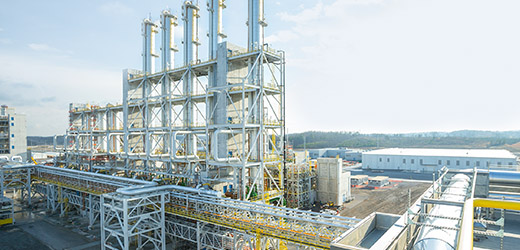WACKER Stock in 2022
Geopolitical crises and a turning point in fiscal policy marked the stock markets in 2022. These changes led to substantial losses on some stock markets across the globe. After early 2022 saw new records set in numerous asset classes, Russia’s attack on Ukraine triggered an unprecedented surge in energy costs. Central banks hiked interest rates to fight growing inflation, resulting in slower economic activity, especially in the construction industry, and pushing the euro to a 20-year low. In addition, China’s policy for combating the coronavirus pandemic dampened global economic growth. Lower domestic demand in China due to government restrictions meant growing import pressure amid sharp cost increases and declining demand for the global chemical industry outside China.
Strong energy-price hikes as well as increases in prices for raw materials, starting products and logistics led to production declines, plant shutdowns and disruptions in supplies for downstream products in the chemical industry. These factors also affected operating performance at WACKER. WACKER counteracted higher costs with substantially higher prices year over year for its products. At the same time, however, increasingly difficult economic conditions dampened demand markedly in the second half of the year.
The first half of 2022 went very well for WACKER, with the help of prudent energy hedging, advantageous inventory effects from raw materials, and strong demand. The share price reflected this trend with the stock reaching a high of €183.90 on June 8, 2022. But pressure on the share price mounted at year-end due to reduced demand in the chemical sectors, various profit warnings from customers in the paint and construction industries, and capacity expansion of competitors in the silicones and polysilicon industries.
In 2022, Germany’s DAX index dropped by 12 percent and the MDAX by 28 percent. In the same period, WACKER stock declined by only about 9 percent.
At the start of the year, WACKER stock stood at €131.60 (year-end closing price on Dec. 30, 2021). After an interim low of €122.60 on February 24 immediately after the start of the invasion in Ukraine, the share price regained some ground. A strong earnings trend and WACKER’s Capital Market Day in late March also contributed to a more positive outlook. At this event, management informed analysts and investors of the Group’s strategic goals for the period up to 2030. On June 8, WACKER stock reached its high of €183.90 for 2022. The economic environment weakened in the ensuing months, putting pressure on stock prices. WACKER stock reached its reporting-period low of €100.90 on October 14. In its Q3 Interim Report, WACKER confirmed and detailed its earnings projections for the full year. The prospect of historically high earnings then rejuvenated the share price, and WACKER stock ended trading on December 30, 2022, with a closing price of €119.40.
|
||
ISIN |
|
DE000WCH8881 |
|---|---|---|
WKN |
|
WCH888 |
Frankfurt Stock Exchange |
|
WCH |
Bloomberg |
|
CHM/WCH.GR |
Reuters |
|
CHE/WCHG.DE |
Initial public offering |
|
April 10, 2006 |
Capital stock |
|
€260,763,000 |
Trading segment |
|
Regulated market (Prime Standard), |
Category of shares |
|
Bearer shares |
Number of shares (Dec. 31, 2021) |
|
52,152,600 |
Number of shares outstanding |
|
49,677,983 |
Paying agent |
|
Deutsche Bank, Frankfurt/Main |

